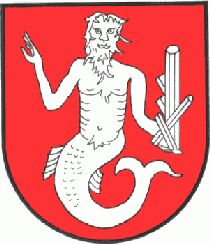Grundlsee: Difference between revisions
Jump to navigation
Jump to search
Knorrepoes (talk | contribs) m (Text replace - "|}<seo title="Wappen von Österreich" />" to "|}<seo title="|}<seo title="Wappen, Gemeindewappen, Stadtwappen, Marktwappen, Österreich" />" />") |
Knorrepoes (talk | contribs) m (Text replace - "Österreich" />" />" to "Österreich" />") |
||
| Line 3: | Line 3: | ||
|width="70%" align="center" |'''Heraldry of the World<br>Civic heraldry of [[Austria]] - [[Austria|Österreichische Gemeindewappen]]''' | |width="70%" align="center" |'''Heraldry of the World<br>Civic heraldry of [[Austria]] - [[Austria|Österreichische Gemeindewappen]]''' | ||
|width="15%"|[[File:Austria.jpg|50 px|right]] | |width="15%"|[[File:Austria.jpg|50 px|right]] | ||
|}<seo title="|}<seo title="Wappen, Gemeindewappen, Stadtwappen, Marktwappen, Österreich | |}<seo title="|}<seo title="Wappen, Gemeindewappen, Stadtwappen, Marktwappen, Österreich" /> | ||
'''GRUNDLSEE''' | '''GRUNDLSEE''' | ||
Revision as of 17:34, 12 January 2014
| Heraldry of the World Civic heraldry of Austria - Österreichische Gemeindewappen |
GRUNDLSEE
State : Steiermark
District : Liezen
Origin/meaning
The arms were granted on June 21st, 1982.
The arms allude to the founding myth of salt mining in Upper Styria: A Wassermann (water spirit) was captured by humans; in order to ransom himself he showed them the Sandling mountain, which contains salt. In the Middle ages, salt was of course very valuable and much sought-after.
Today, the mining of gypsum is more important; so, the water spirit is holding a crystal of gypsum in his hand.
Literature : Image provided by Karl Palfrader (k.palfrader@aon.at), MStLA Folge 33 (1983), p. 3

